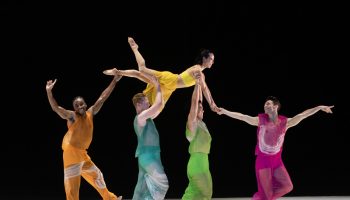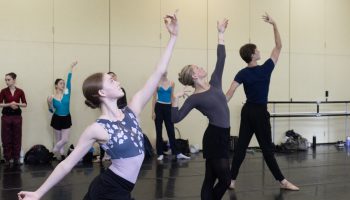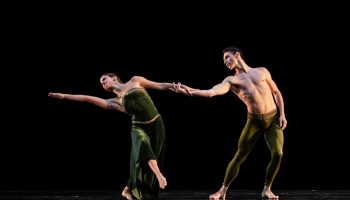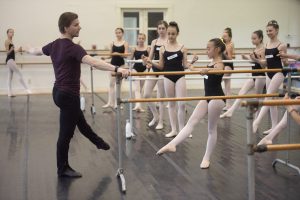
Daniel Ulbricht paced between rows of ballet barres; “You should be so strong in your first position right now that I could tackle you and you wouldn’t move,” he said.
The stern-faced, leotard-and-bun cladded dancers didn’t budge.
Ulbricht wears many hats: teacher, principal dancer with New York City Ballet, Chautauqua School of Dance alumnus and founder and director of Stars of American Ballet, a collaborative company comprised of top dancers from the nation’s elite dance institutions.
Stars of American Ballet made its Amphitheater debut Wednesday night. But before the lights hit the satin pointe shoes, or the dancers prepped in the wings, Ulbricht was in the Carnahan-Jackson Dance Studios.
By the end of teaching his second class before noon Tuesday, Ulbricht was standing on a chair, directing the Chautauqua School of Dance Workshop I students to jump with feet “sharp as knives.”
Taking his direction, the students sautéd with precision; Ulbricht dished out praises left and right with enticing energy, despite having taught older students, coordinated rehearsal schedules, managed flights for his company members and done an on-camera interview earlier that same day.
His visit to Chautauqua meant coming full circle; Ulbricht first performed on the Amp stage in 1997, as a student in the School of Dance. He came back for three more summers.
He rehearsed in the same studios 22 years ago as he taught class to the stern-faced preteens on Tuesday morning, rehearsed Jerome Robbins’ “Suite of Dances” that night and instructed a company class with his colleagues from NYCB on Wednesday afternoon.
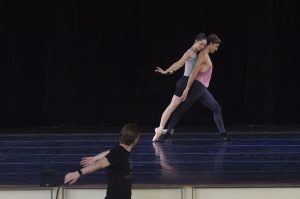
“Suite of Dances” is, as Ulbricht described, a “monologue of moods” told through Bach’s music for cello. It’s an unexpectedly demanding ballet, both physically and emotionally, Ulbricht said — something he could physically dance at 24 years old, but couldn’t internalize until he was older and more mature.
“Looks like you did it yesterday,” cello accompanist Ann Kim told a winded Ulbricht; this was the first time he performed the nearly 15-minute suite in weeks, he said.
Almost immediately, however, Ulbricht’s mindset shifted into production mode, timing his 10-minute quick change and correcting mistakes, likely invisible to the untrained eye, but catastrophic to Ulbricht.
Ulbricht then took a break, maybe the first of the day, before heading to the Amp at 10 p.m. to begin queuing lighting and sound; he was there until 3 a.m. and woke up the next morning to teach, rehearse and perform.
During company class Wednesday afternoon, which Ulbricht led, his colleagues stretched and warmed up their bodies before marking through sections of the night’s show, heading across the grounds for lunch and to the Amp dressing rooms for staging.
The dancers moved through the rehearsal with relative ease, perfecting complicated steps and rarely missing a beat.
“Push over your feet … come in before the eight-count … review the steps,” Ulbricht said from the Amp benches — though newer and likely more comfortable — where he once sat as a student in awe at the dancers on stage.
By the end of the in-Amp rehearsal, the pieces were blocked, the lights set, props marked and dancers warmed.
And when Ulbricht hit the stage, the days of chaotic, perhaps stressful pre-production, were drowned out by applause.
Watch this incredible #tbt video of Principal Dancer Daniel Ulbricht rehearsing Candy Cane, his first principal Nutcracker role at NYCB.
George Balanchine's The Nutcracker® is on stage now – DEC 30: https://t.co/ebKS1Fck2c pic.twitter.com/JAXDjUMITY
— New York City Ballet (@nycballet) December 6, 2018


